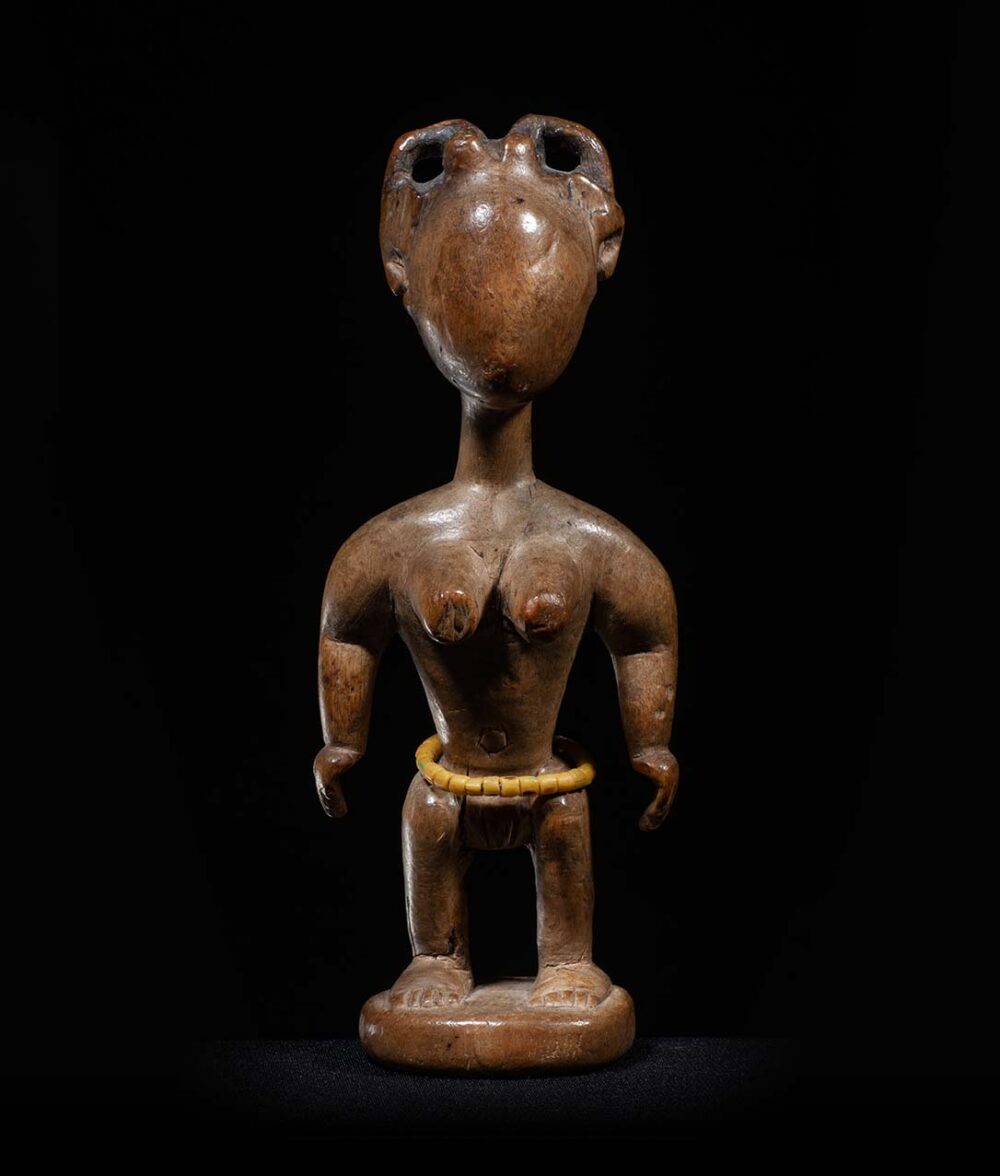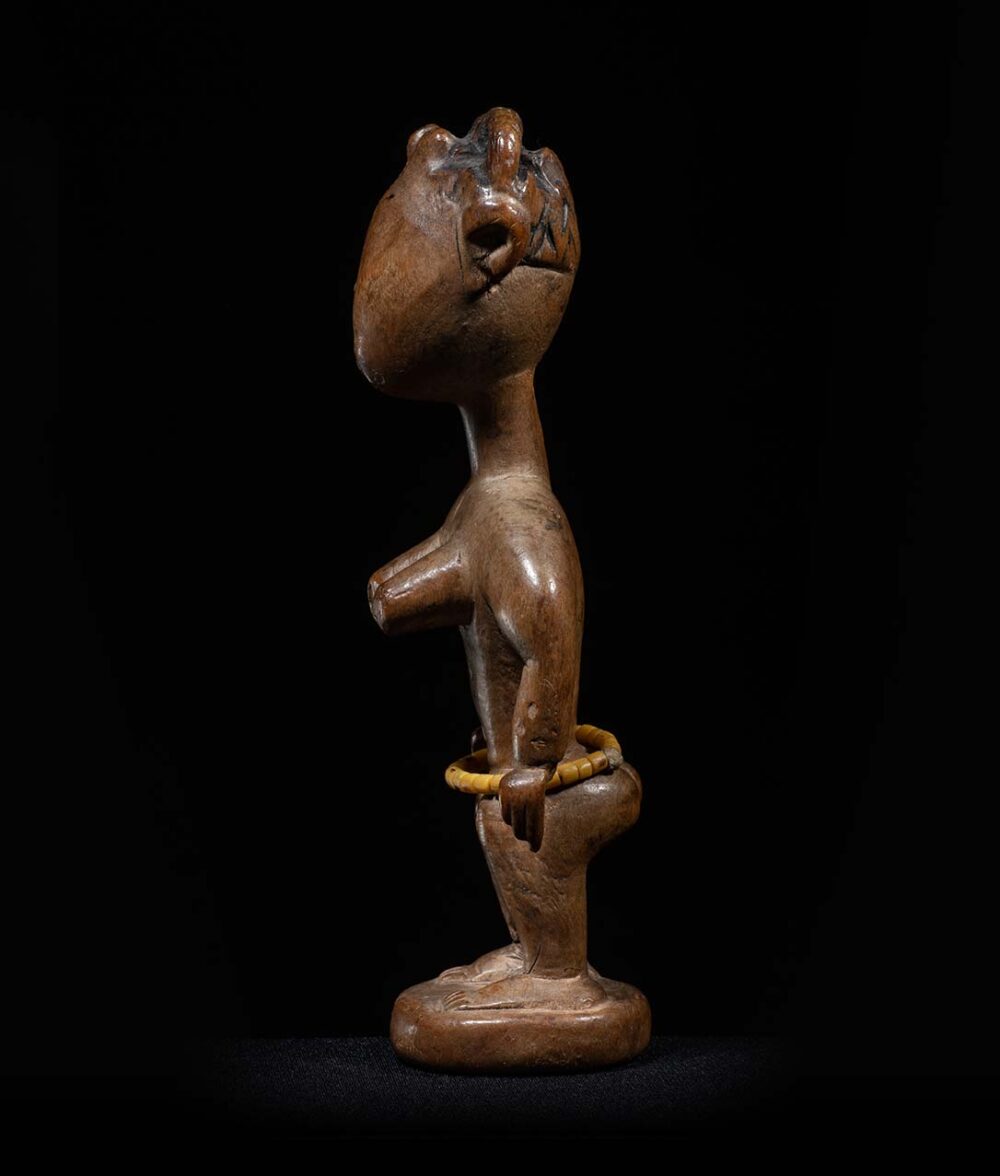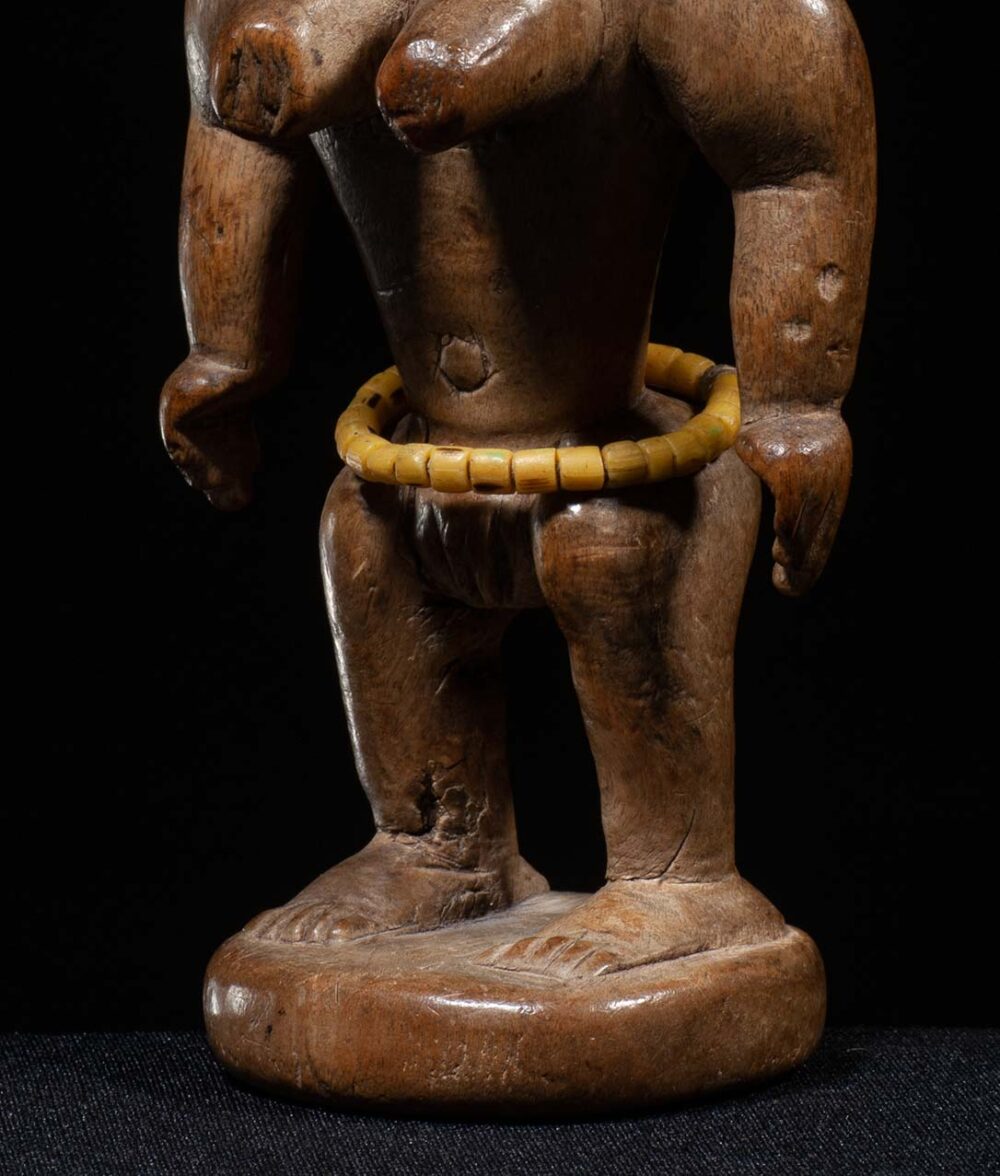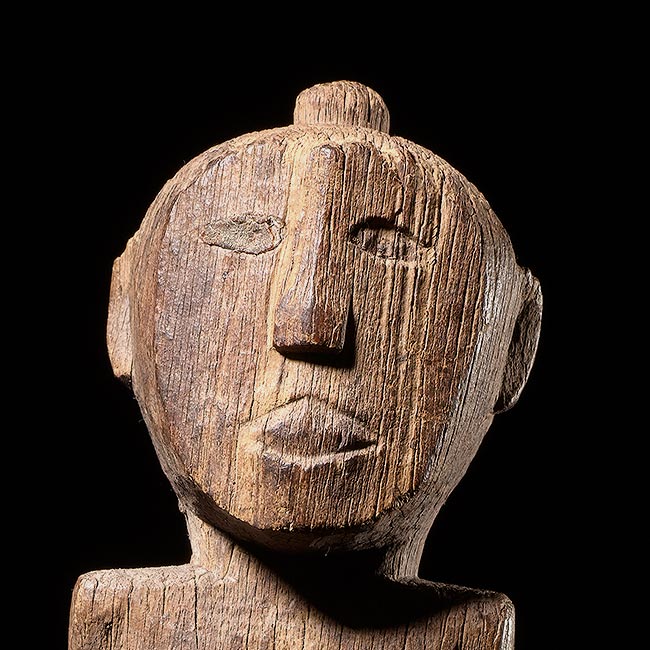Venavi Figure
Ewe people, Ghana
Early 20th c
Provenance: Noble and Jean Endicott, NY.
Venavi figures were often created in pairs, particularly when they were intended to represent deceased twins. In Ewe culture, twins are believed to possess a special spiritual power, and when one twin dies, it is believed that the surviving twin will carry that power and must be cared for in a special way. Venavi figures were created to represent the deceased twin and are used in ceremonies and rituals to honor and communicate with spirits of the deceased.
This example is beautifully carved, having an elaborate and detailed coiffure and a well sculpted torso with arms hanging downward and away from its body. The entire figure is well worn and appears to have been intentionally rubbed, especially the face, where the facial features have worn- away from recognition. The worn-away facial features are intentional and are believed to serve as a protective measure. The Ewe believe that facial features of powerful spirits can be dangerous and may cause harm to the living if depicted in their entirety. As a result, the features are either rubbed away or obscured to prevent this from happening.
Venavi Figure
Ewe people, Ghana
Early 20th c
Provenance: Noble and Jean Endicott, NY.
Venavi figures were often created in pairs, particularly when they were intended to represent deceased twins. In Ewe culture, twins are believed to possess a special spiritual power, and when one twin dies, it is believed that the surviving twin will carry that power and must be cared for in a special way. Venavi figures were created to represent the deceased twin and are used in ceremonies and rituals to honor and communicate with spirits of the deceased.
This example is beautifully carved, having an elaborate and detailed coiffure and a well sculpted torso with arms hanging downward and away from its body. The entire figure is well worn and appears to have been intentionally rubbed, especially the face, where the facial features have worn- away from recognition. The worn-away facial features are intentional and are believed to serve as a protective measure. The Ewe believe that facial features of powerful spirits can be dangerous and may cause harm to the living if depicted in their entirety. As a result, the features are either rubbed away or obscured to prevent this from happening.











